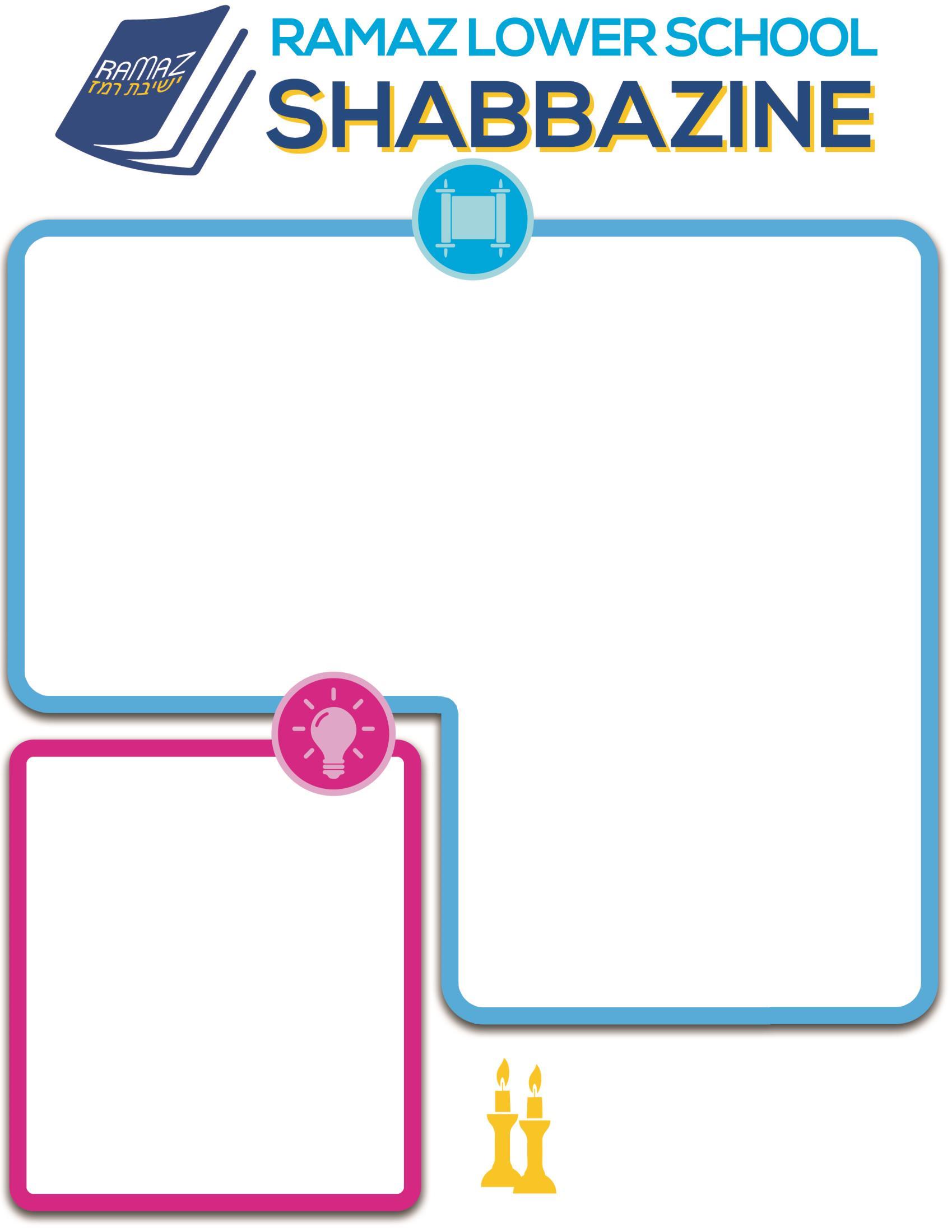March
A PEEK AT THE PARSHA
Hashem calls Moshe from the Mishkan and tells him to teach Bnei Yisrael about the laws of Korbanot (sacrifices). Animal korbanot include animals from the cow and sheep families, turtledoves, and young doves. When someone brings an animal korban, he performs Smichah: putting one's hands on the animal’s head and leaning on the animal. While doing Smicha, the animal owner would confess his sins and think about doing teshuva (repentance).
Animal Korbanot consisted of four steps. Shechitaslaughtering the animal, Kabbalah - catching the blood in a basin, Halacha - carrying the blood towards the Mizbay’ach (Altar), and Zerikah -
ONE BIG IDEA
The parsha - and therefore the book of Vayikra - begins with Hashem calling (Vayikra) to Moshe. But the word vayikra is oddly written with a small Aleph. The Baal Haturim, a commentaryonthe Torah,explainsthatMoshe wasmodestanddidnotwanttopublicizeinthe Torah that Hashem spoke directly to him. Instead, Moshe wanted to write the word Vayikar, which means “happened,” similar to the word used with other prophets. Hashem disagreed and instructed Moshe to write the word Vayikra, so Moshe compromised and wrote vayikra with a small Aleph. Moshe’s greatest quality was his humility.

sprinkling of the blood onto the Mizbay’ach. The kohen would place salt on every Korban that was offered onto the Mizbay’ach
There were four types of animal Korbanot.
1. Olah: A korban that is entirely burned on the Mizbay’ach. An example of an Olah that was brought every morning and afternoon was the Olat Tamid.
2. Shelamim: A korban that was brought as a gift to Hashem. An example of Shelamim is a Todah - a type of korban done when people wanted to thank Hashem for something good that happened.
3. Chatat: A korban brought when someone mistakenly commits a serious aveyrah (sin). There was a special Korban Chatat for the King and even the Kohen Gadol.
4. Asham: A korban brought for certain types of sins, as well as the Korban brought by a Nazir (someone who took a vow not to cut his hair or drink wine) or a Metzora (someone who had the disease of Leprosy).
There was also a Korban Mincha that was brought from flour. Some of them would be mixed with water or oil. Levonah (Frankincense) was a pleasant-smelling incense that was added and burned together with the Korban Mincha.
22, 2024 · ד״פשת"י 'ברדאג
TIMES - םינמז Candle-lighting: 6:52pm Havdalah: 7:49pm allah:5:25pm
Parashat Vayikra · ארקיותשרפ
PARSHA STATS
Mitzvot ..............................16 (11 positive, 5 negative)
Lines in the Torah ..............215 (19th most)
Pesukim .............................111 (26th most)
Words ................................1673 (20th most)
Letters................................6222 (20th most)
Year(s)................................2449
(Source: OU Torah Tidbits)
CHECKLIST
To be filled out after shabbat and brought in Monday.
Called someone to wish them a “Shabbat Shalom”
Went to shul
Participated in Hadlakat Nerot/Kiddush/ Hamotzi/Birkat Hamazon
Sang zemirot/songs
Wore Shabbat clothing
Helped prepare our home for Shabbat
Full Name: ______________________________
Class: __________________________________
Parent Signature: _________________________
DID YOU KNOW…?
“Purim Torah” is when you take a Torah idea and play a little (harmless) joke with it. For example: Gematria is when you use the numerical value of Hebrew letters (Aleph=1, Bet=2, Caf=20,etc.).Didyouknow thatifyou add all the letters in Ms. Gafni’s Hebrew name, then subtract the number of students in Ashkelon, then multiply that by the number of studentsin Bnei Brak,then dividethat bythenumber of Netilat Yadaim sinks in the lunchroom, then add 1 (for Hashem, of course), then you get the numerical value of הכלמה רתסא?

QUESTIONS
1. Whose idea was it to make the Aleph (in vayikra) small?
2. In which categories does Parshat Vayikra rank 20th?
3. What seasoning was put on every korban?
4. A Korban Todah is an example of what kind of korban?
5. Can you come up with your own “Purim Torah?”


